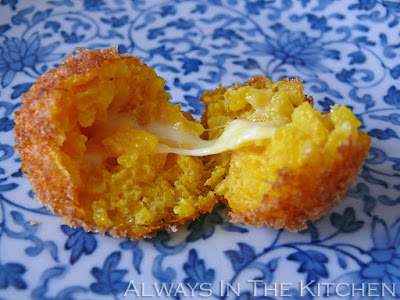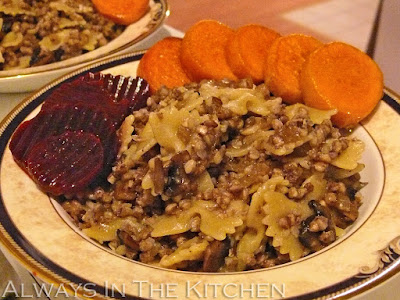
The very first meal that we had in Marrakech was a wonderful feast prepared by the cook our our riad (traditional Moroccan boutique hotel), featuring a variety of salads, and this iconic meatball & egg tagine. Arriving late at night after a significantly delayed flight, we were extremely grateful for two things: first, that we had arranged a driver through our riad to bring us in from the airport, and second, that this meal was waiting for us when we finally staggered through the door.
There are a lot of recipes for this dish out there in the wilds of the internet, and I initially tried one I found that looked pretty good but ended up swimming in copious amounts of a sauce more reminiscent of a displaced marinara. So, I researched a little harder, and then dug into my notes from our trip to Morocco. This is the result, which feels much closer in spirit to what we had in Morocco. There is enough sauce to provide a condiment to the meatballs and also to cook the eggs, but not an excessive amount.
Tagines are traditionally served with bread, rather than rice or couscous, so I picked up a couple of khobz-like flatbreads from a local bakery, and served the tagine with lemony, Moroccan-style carrot salad and spiced olives on the side.
Kefta Mkaouara
(Moroccan Meatball & Egg Tagine)
Serves 4
550 grams mixed ground beef and lamb
1 large whole egg, beaten
1/2 teaspoon kosher salt
1/2 teaspoon ground white pepper
1/2 cup panko-style bread crumbs
2-3 teaspoons Ras el Hanout* spice mixture, divided
1/2 tablespoon olive oil
1/2 cup parsley, divided
1 1/2 cups canned diced tomatoes (low sodium preferably)
1 medium yellow onions, diced somewhat finely
2 clove garlic, minced
1 tablespoon tomato paste
1/2 teaspoon ground turmeric
1 teaspoon chili flakes
4 eggs
In a large mixing bowl, beat the egg and add the panko, a teaspoon of Ras el Hanout, and half the parsley. Stir together.
Break apart the ground meat in little pieces (I use my fingers for this), letting it fall on top of the egg/crumb mixture, and then season with salt and white pepper. Use a fork to gently (but thoroughly!) combine the ingredients into a homogenous mixture, being sure to distribute the breadcrumbs well throughout the meat. Shape into very small meatballs with a tablespoon or very small disher. You can leave them rough or rolls them between your palms to make nice rounded meatballs, each a bit smaller than a walnut. You should get 24 meatballs.

Heat the oil in a medium skillet (the one above is 23 cm) over medium-high heat, and brown the meatballs in batches (don't bother cooking them all the way through at this stage, and don't overcrowd the pan). Remove the browned meatballs from the pan to a plate, and add the diced onion and the garlic into the emptied pan. Sauté until the onions are translucent, then add the tomato paste and stir through. Sprinkle the turmeric, a teaspoon of Ras el Hanout, and the chile flakes over the onions, and stir through. Add the can of tomatoes with their juices. stir through. Cook altogether until it starts to resemble a sauce, about four or five more minutes. Turn the heat to low, and add the meatballs (and any juices that may have collected on the plate). Cover and cook for 10 minutes.

Make a "nest" in the meatballs to create space for each egg - one per person is usual. Crack an egg directly into each nest, season with a bit of salt and pepper, and cover. Continue to cook on low heat for 5 - 10 minutes more, depending on how done you like your eggs. If you plan to have meatballs leftover for a future meal, just cook the number of eggs that you need for the moment. The eggs can be freshly cooked when you warm up the meatballs and sauce the next day (or you can skip the eggs on the second pass, and just stuff the (warmed up) meatballs and sauce into a hollowed-out flatbread for a fantastic meatball sandwich. When reheating, you may need to add a tablespoon or two of water to loosen the sauce to an optimal consistency.
* If you are unable to find a premixed Ras El Hanout blend (we brought ours back from Morocco, but it is often available in grocery stores that stocks North African and/or Middle Eastern spice mixtures), you might want to make your own: This one, and this one both look like decent options.










































